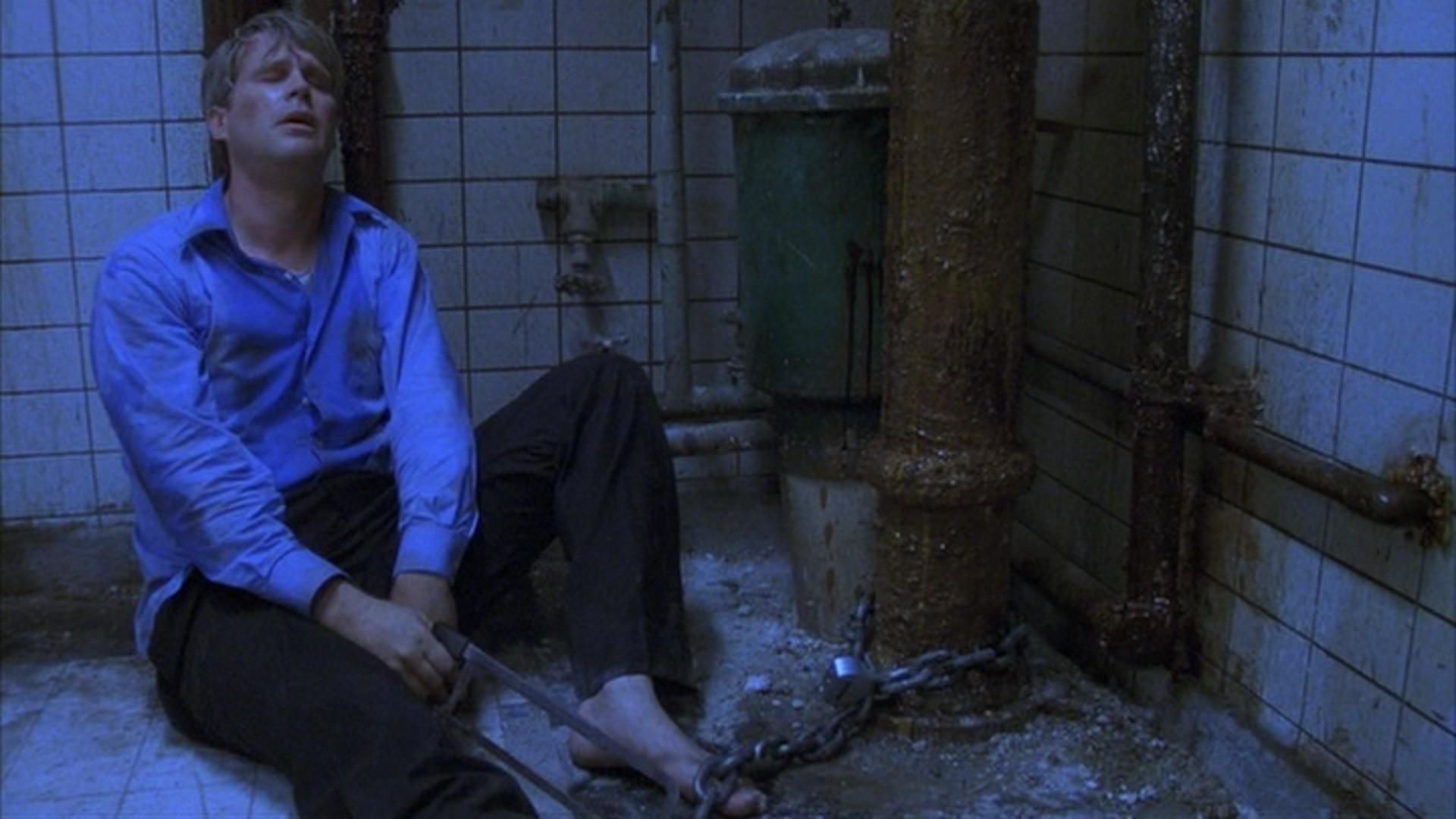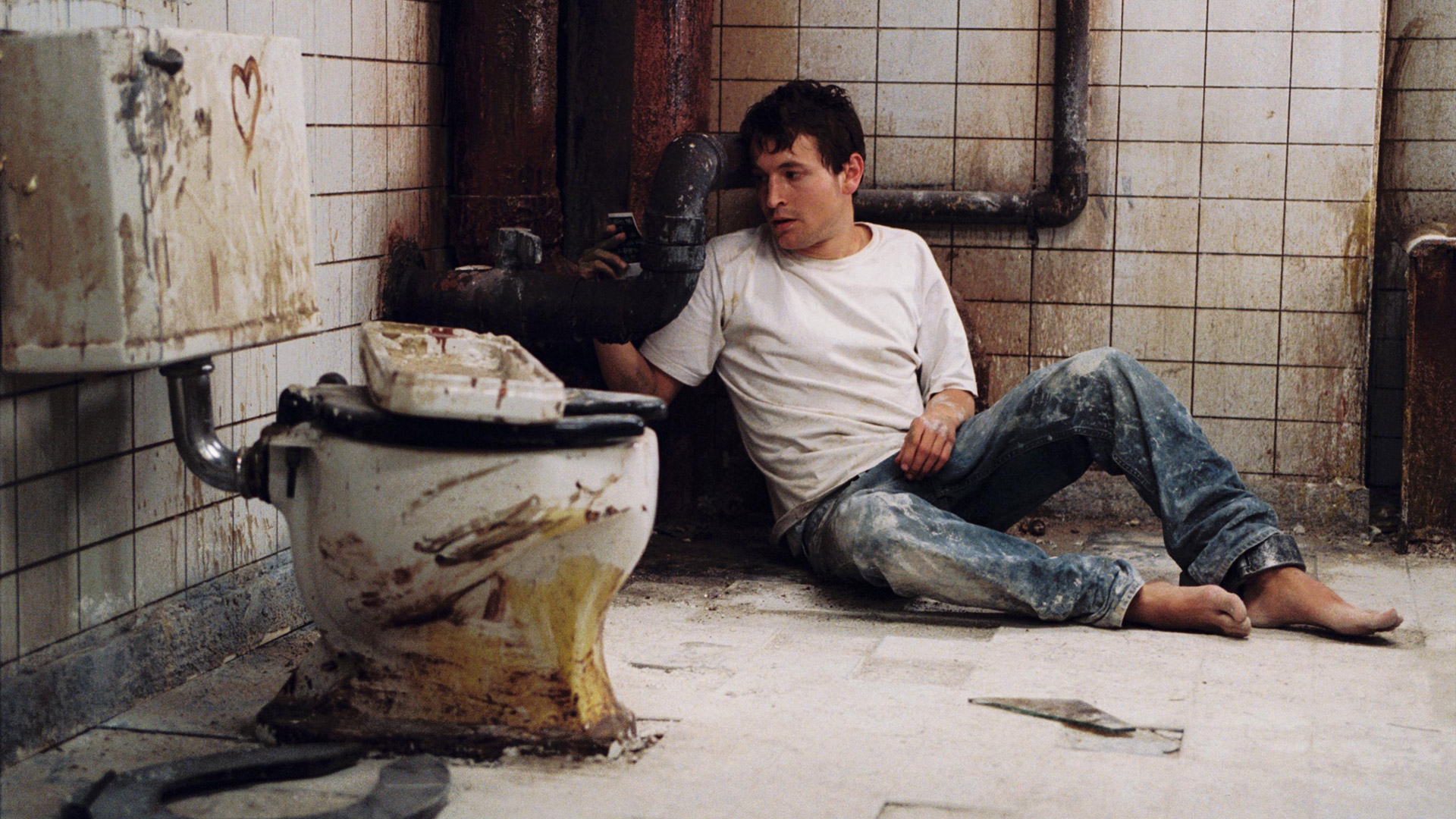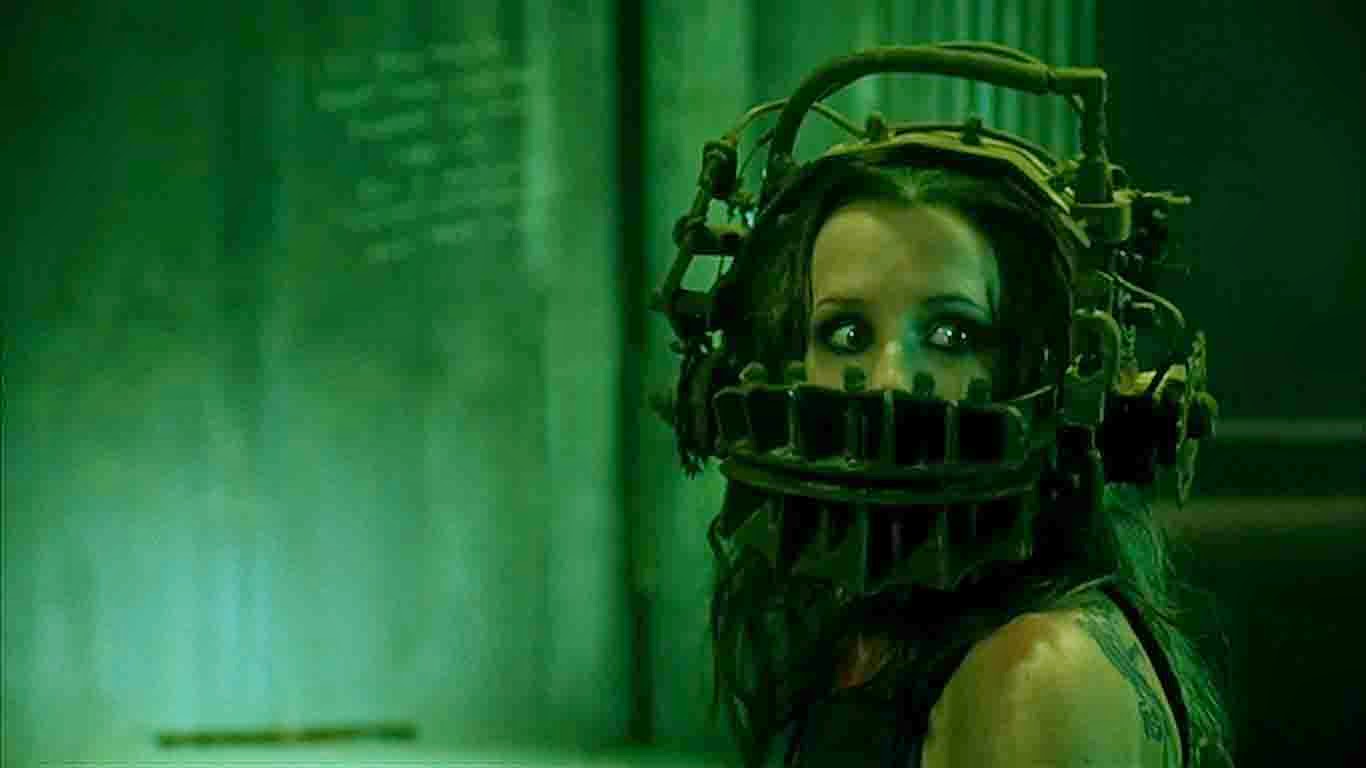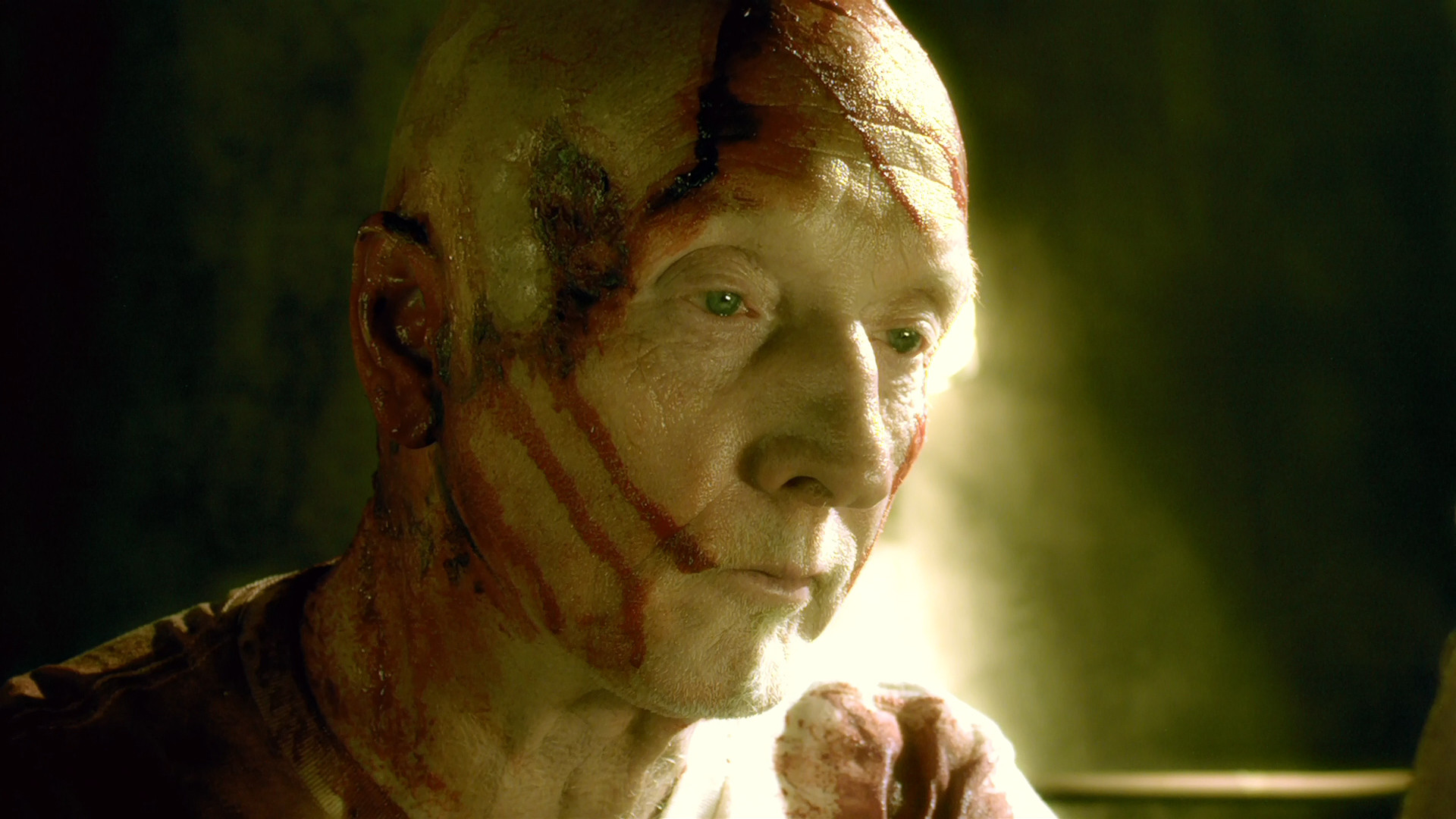Table of Contents Show
The Saw franchise: a sequence of seven gritty films complete with a hodgepodge of villains. The movies’ terribly violent actions have simultaneously driven audience members away and pulled others closer over the course of their existence. While all have been successful, it’s important to remember that it needs to derive from an incredible source for a franchise to succeed.
This franchise is no exception. From the story to the budget, Saw 1 set a new standard for horror movies by creating a film quite unlike any the cinematic world had ever seen before. In one single movie, the creators forever altered the world of terrifying cinema.
Some Much-Needed Backstory
Before we dissect the movie’s genius, we first need to understand the creators of the franchise: James Wan and Leigh Whannell. They were just two college buddies who loved horror films. They were desperate to make their mark in Hollywood. So what made them stand out from other creators? What did they have that allowed them to change the face of the horror industry?
The answer is simple: sheer determination and passion.

As it goes in Hollywood, horror movie budgets were higher than two college students could afford. So what did Whannell and Wan do? They created a five-minute version of their film and acted in it themselves. They created a concept piece and continued to pitch their script around Hollywood until Lionsgate bought the concept and picked up the script from Whannell and Wan. Persistence helped them make it, and that same persistence and passion are clear throughout their debut feature. Perhaps that has a part in why Saw 1 is such an iconic and unforgettable movie. Viewers can decide whether that’s good or bad for them.
Who Needs Locations?
Perhaps one of the most impressive things about Saw 1 is that most of the action takes place on a singular set. Although there is a police investigation occurring around the Jigsaw murderer, the characters we are invested in the most are trapped in a singular room for the film’s entirety. It’s hardly even a room: it’s more of a very large bathroom. The viewers don’t have to go anywhere else to understand what’s going on.

While the movie itself was shot in multiple locations, only the bathroom was physically built. By utilizing real spaces in other parts of the film, the creators of Saw 1 managed to encapsulate just how terrifying this bathroom is. It contrasts wildly with the scenes of investigation: bleach-white tiles and dirty walls completely different from the outside world that the duo will unfortunately never see. While this may seem like a subtle detail, it’s crucial to what makes this film stand out from others like it. Those in the throes of anguish in this film never come in contact with the outside world.
The police never come in contact with the killer. And the sets successfully distinguish to us, as the audience, that there are two completely different worlds within this seemingly normal universe. It’s agonizing and so good. The more realistic a situation is, the more invested they may be for a modern horror audience. Fictionalized horror died down along with 80’s movies like Gremlins or ET. Audiences grew tired of things they couldn’t relate to.
Saw 1 and its torturous cinematic situations pull the audience in like none had done before with a serial killer that could be anybody on the street. All it took was a great set to match an even greater story.
A Minuscule Budget
In general, most horror movies are created on an average budget of $13 Million. Saw 1 “cost barely over $1 million to make and raked in about $100 million worldwide” (( Fletcher, “Reel Toronto: The Saw Sequels.” 2011 )). That’s a cool $99 million in revenue, not even counting the money this film has continued to rake in since. How did they do that? How did they create such an excellent movie on such a low budget? Easy. Saw 1 is real.

It isn’t some horror show with zombies or ghosts or vampires. They don’t use a ton of CGI to make the monster scarier. The monster is humanity. The sets, the locations, they’re all based in extreme reality. Perhaps that’s the scariest part of this film: it could happen to you too. Money isn’t needed to make something scarier. Sometimes, the scariest things are the most realistic. And for realism, a massive soundstage isn’t necessary—just a hook on the reality of human nature.
Thanks to Saw 1‘s innovative use of money, horror film production costs have been dropping, while the quality continues to go up. Take 2018’s Searching, for instance, created on a budget of $880,000 and pulling in a revenue of $75.5 million (( “Searching Box Office.” 2018 )). Or even A Quiet Place’s budget of $17 million with a revenue of almost $340 million (( “A Quiet Place Box Office.” 2018 )). Saw 1 proves that sometimes, bigger isn’t better. All it takes is a passion.
The Horror! The Horror!
Saw 1 emerged from an era of iconic horror films: The Ring, 28 Days Later, and The Texas Chainsaw Massacre, to name a few. But this film embraced the concept of psychological, physical torture and hiked it up to an entirely different level. Saw 1 brought a strange mix of gore and puzzles to the masses, simultaneously sparking intrigue and disgust. It was…new. And audiences love new.

On the critics’ side of the scale, most didn’t enjoy it. However, this seems to be the case quite often for cult classic films. The positive ones, however, were quite positive: “Saw boasts an undeniably original premise and clever plot machinations that lift it several notches above the usual slasher film level” (( Scheck, “Saw Reviews.” 2004 )). The general viewing audience loves the film, embracing the twists and the various scenarios characters are forced into. Say what you may about the quality, but the horror of Saw 1 truly redefined what “scary” meant to a modern world.
The Twist Of Twists
We all love a twist ending. Before this film, many movies embraced this technique. The Sixth Sense gave us our ghosts, Seven gave us that gruesome and unexpected death, and Scream provided a killer shock. Still, Saw 1‘s seemed to come out of absolutely nowhere. I mean, who would have suspected that the killer was smack in front of them the entire time? Not many audience members in 2004. To reveal something to the audience that had been right in front of their eyes for the entirety of the film quite literally was a very original concept.

It brought back the shock of the Scream franchise. The audience learned that they could participate somewhat in these films, figuring out what would happen to the unfortunate characters for themselves. Saw 1 was a puzzle within the plot…but it was also a puzzle for the viewers.
Saw 1 essentially revived the idea of the twist ending from its death after The Sixth Sense. Audiences remembered what it felt like to be surprised once again, and they were hooked. With so many ideas out globally, to have something new and exciting was a well-needed boost within the horror franchise. Audiences and filmmakers alike latched onto it. The franchise was born, and the film officially solidified its place in movie history.
Saw 1: King Of Its Genre
In short, Saw 1 is an absolutely unexpected masterpiece of a film. While it may not appear so on the surface, this movie introduced many things to the modern horror era that would be embraced forever: a low budget, a killer plot twist, and the idea of a singularly-located plot. The concept of budget, twists, and plot were altered, along with many other once overdone aspects of terrifying movies. It spawned seven sequels, with an eighth on the way, and will undoubtedly continue to grow over time.

Wan and Whannell showed the world that through persistence, anything could happen. If you are passionate about a concept, it can become a reality. Not only that, but it can change what already exists with your drive. The duo demonstrated that horror doesn’t have to be expensive: it just has to be scary. Saw 1 proved that, and it will be awesome to see what other young filmmakers take inspiration from Whannell and Wan’s journey.
